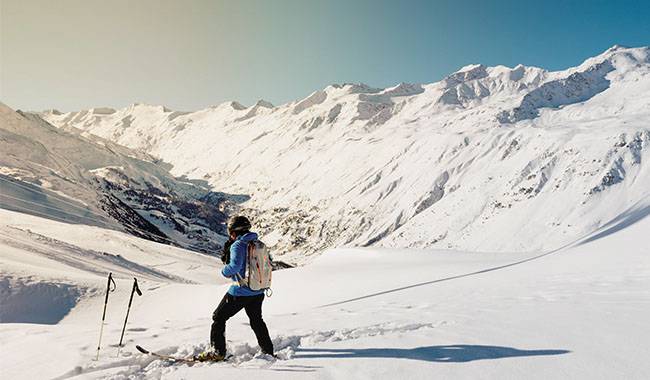
Skiers and snowboarders are a special demographic. Summer is still in full swing and they are already planning the opening of the ski season. The most impatient skiers are ready to hit the slopes as early as October or November, or at least as early as early December. In the Alps in the fall, you can only ski on glaciers, but in November and the first week of December, many resorts are already open for a full season. That’s where we chat about where you can European skiing in this lcnoutdoors.com article.
Kitzbuhel
If you think only resorts in the high mountains offer skiing in the late fall, you’re wrong. Kitzbühel in Austria, where the highest point of the slope doesn’t even reach 1.25 miles (2,000 meters), has been open for skiing in early fall for years. The opening of the ski season here looks very interesting: the snow from the previous year is pushed out and a decent 0.6 mile (1 km) long ski run is set up.
The entire season opens in mid-October, the earliest opening of any non-glacier resort in the Alps. Of course, most of the snow here is man-made – 100% of the pistes here are covered with snow cannons. However, the quality of the snow is very decent thanks to the latest generation of snow machines, of which there are over 1,000!
The town itself, located 0.5 miles (800 meters) above sea level, looks almost summer in October and November, a combination that brings a unique charm and atmosphere. Another reason to come here for the open season is the easy access; it is only two and a half hours and 20-30 Euros by train from Munich airport.
Soelden
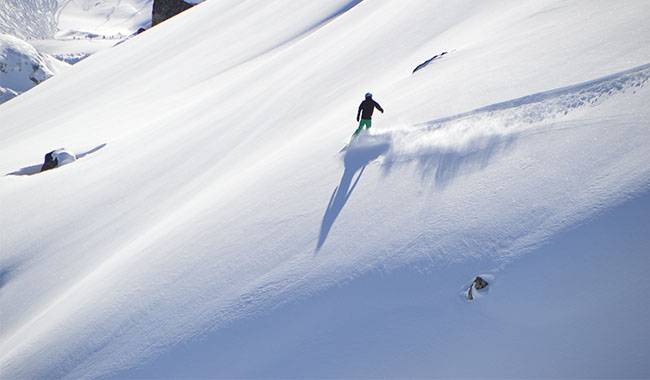
Not the earliest, but the most iconic opening ceremony of the season takes place in Soelden, Austria. Traditionally, this is where the Alpine Ski World Cup races start. In recent years, the first race date has been set for the end of the year. The women’s race starts with a giant slalom race.
Unfortunately for summer skiers, Soelden’s glaciers have been closed from May to September in recent years. The opening of the glacier skiing is scheduled for September, with the main ski area opening as early as November. Not just in Soelden, but in the entire Özta Valley, including neighboring Obegel and Hochgur. Surprisingly, even those who have not reached Soelden at once do not always reach the 70 – mile (112 km) long prepared slopes and unplowed virgin land of this small but interesting ski area. There are no glaciers here, but the high point of 2 miles (3220 m) speaks for itself. Snowfall is not uncommon even in summer, with the first snowfall occurring in September.
If you want to open the season in Soelden, be sure to catch a Saturday: from November, the Giggijoch plateau at 1.5 miles (2,400 m) opens its fan zone for concerts and parties from 2 to 4:30 pm. In addition to great skiing, Soelden is also known for its après-ski activities, which are unmatched by its quiet and peaceful neighbor, Obegele.
The best way to get here is by car; the journey by train and car is quite long and tiring. You can rent a car at Munich airport for about $150-200 for a week. Not only does it make it easier to get to the nearby ski resorts, but you can also go see Lengenfeld, splashing around in one of the best spa complexes in Europe.
St. Anton (Saint Anton am Arlberg)
For experienced skiers, the name St. Anton says a lot. the first ski lifts and ski schools were opened here in the early 20th century.
Over 185 miles (300 km) of pistes and hectares of pristine terrain with an altitude difference of 0.8-1.7 miles (1300-2800 m), pistes for all fitness levels, and challenging off-piste routes – what more do you need to kick off the season? For skiers, this is the perfect place: the resort is considered one of the most interesting not only in Austria but also in the entire Alps.
In the early years, the opening of the ski season is scheduled for the end of November when most of the ski area is guaranteed to be covered with fresh snow – September and October already have heavy snowfall on a regular basis. The recently opened new connection to neighboring Lech, which used to be accessible only by bus or via a complicated virgin route and had to be accompanied by a ski guide, makes this ski area even more accessible, but it should be noted that at the beginning of the season it may work “depending on weather conditions”.
From the end of November, the Advent Magic Festival in the park takes place on Sundays. This is quite different from the traditional Christmas market with its souvenirs, hustle and bustle, and gift shopping. The idea is to take guests back to their childhood and create a Christmas fairy-tale atmosphere, and the owners succeed in doing just that.
An added bonus to St. Anton is its accessibility. The route of the Orient Express used to run here. Now the railway line has been dug into a tunnel, the station has been moved to the outskirts of the resort, and the old station building, which is a monument to the legendary route, is now a gourmet restaurant. You can get there from Munich, but it’s even closer to Zurich, with a direct transfer from the airport in less than three hours.
Cervinia
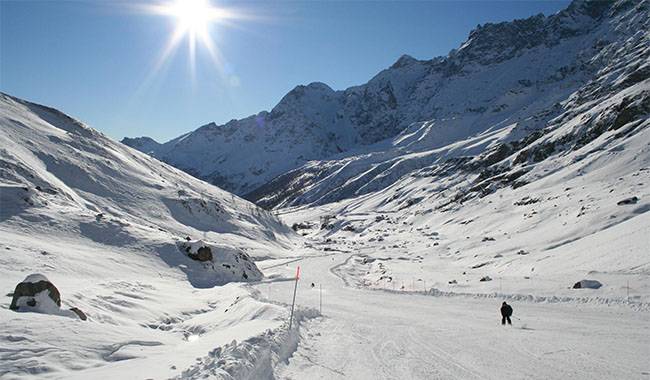
Cervinia is the highest mountain resort in Italy. It is located on a plateau at the foot of the Matterhorn, which is known as Cervinia Valtournenche, 1.25 miles (2,000 m) above sea level. The highest point of ascent is almost 2.4 miles (3,900 m)! The glacier ski area combined with the Swiss Zermatt behind the mountain is open almost all year round, with the entire ski season starting at the end of October/beginning of November, depending on snow conditions.
In total, one ski pass covers 190 miles (305 km) of pistes, with roughly equivalent pistes on both the Italian and Swiss sides. Crossing the border can be difficult due to strong winds when the upper elevators are closed. A new chalet should be built as soon as possible to solve this problem, but in the meantime, you must be very careful not to get stranded in a neighboring country.
More than half of the ski runs are covered with snow guns, which is not common in alpine resorts. Snow machines are not at all redundant here – most pistes are sunny and you have to work very hard to keep up with the snowfall. Skiing on the slopes is guaranteed for the whole season, but freeriding is not so easy – weather permitting.
And of course, there’s the Snow Park, the highest snow park in the Alps and one of the largest – 0.25 miles (400 meters) long and 0.06 miles (100 meters) wide! Here you can see a lot of snowflakes. Those who can afford to fly for 200 to 600 euros can be advised to take a helicopter ride, a service that is not available in every resort. With an altitude of 2.7 miles (4,300 meters), it is the highest point in Europe, and the descent is a whopping 10 miles (16 kilometers) long!
Compared to its Alpine neighbors, Cervinia is not the most interesting resort, but party-goers will not be left out – there are disco bars, nightclubs, and a bowling alley with a swimming pool.
Getting to Cervinia is neither easy nor convenient by public transport – trains and buses, or better yet, renting a car. The nearest airport is Milan, but you can also get there from Geneva. It’s cheaper to rent a car in Milan and you can go through the tunnel under Mont Blanc without paying for it.
Zermatt
Zermatt, on the other side of the mountain, is very different from its Italian neighbors, and even the skiing in these areas is very different. The slopes are mostly shady, which ensures a stable snow cover. The lifts on the glacier work all year round, except for small technical breaks, and the main ski areas open in mid to late November. By this time, most of the slopes and slopes are already full of snow.
It is not for nothing that the anniversary of the Zermatt Ski Festival takes place here, followed by the Winter Open Week, whose acronym is WOW – a real treat for everyone, not just active skiers.
Zermatt’s nightlife is lively all year round, where you can have a good time. In addition to bars, restaurants, and discos, there are festivals that create a unique holiday atmosphere.
At the beginning of the 20th century, Zermatt could be reached quickly by train all year round not only from Geneva or Zurich but also from Paris and Milan.
Today, the journey from Zurich or Geneva airport takes no more than 4 hours with only one transfer. It is very convenient, fast, and cheap, and you can book direct luggage delivery to the terminal for a small surcharge.
Zermatt is probably one of the first places to open the Alpine ice skating season. Pleasure is guaranteed!
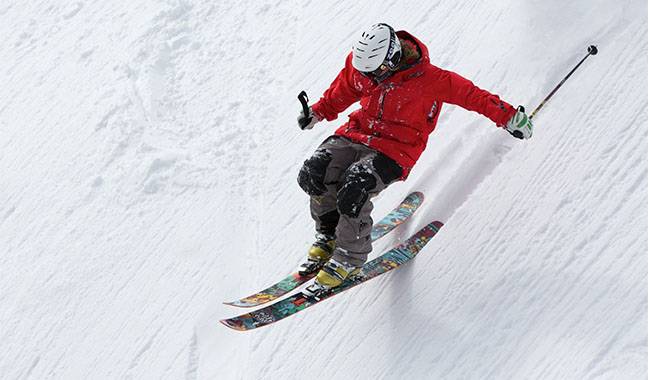
Saas-Fee
Not far from Zermatt lies the lesser-known Swiss resort of Saas-Fee. Unlike its neighbors, there are no rowdy parties and the ski area is much smaller. But those skiers who choose it for their opening ski season won’t regret it.
There are a total of 100 miles (160 km) of pistes in the valley, but with an elevation difference of almost 1.25 miles (2 km) from 1.1-2.2 miles (1800-3600 m), it is a sea of freeriding. The ascent to the highest point is through a kind of alpine underground that runs through the mountains. Newcomers are advised to be careful: a rapid ascent to such heights may play a cruel joke on unacclimatized organisms.
Those who like to leave their signature on the pristine slopes climb higher, up to 2.4 miles (3800 meters), and can join a group with an instructor or take individual instruction if they wish. The lower part of the resort offers excellent “herringbone” skiing, where the snow falls early and doesn’t melt in the autumn sun. a helicopter ride to one of the three ski areas for a group of 4 or more costs 400 euros, more than in Severnia, Italy.
The main ski season starts in December, but the most impatient can test the glacier slopes earlier, and there’s a reason some of the world’s top skiers practice their skills here.
Like neighboring Zermatt, Saas-Fee is a car-free zone. It can be reached by electric car for a small fee. The resort can be reached by train from Geneva or Zurich airport and then by bus in about three and a half hours.
The ski areas of France are the largest and most mountainous in the Alps. Most of them are built on carefully planned high-altitude plateaus, close and comfortable. However, getting here is usually a long walk, at best by bus or rental car from Geneva or Lyon airports.
Val Thorens
Val Thorens is the highest mountain resort in the Alps. It was built in the 1970s and is ideally designed for skiers and snowboarders. With about 100 miles (160 km) of its own pistes and about 370miles (600 km) of pistes in the single Three Valleys ski area – most of which are over 1.25 miles (2,000 m) high, with a maximum climb of 2 miles (3,200 m) to the glacier – there is no doubt that a good skiing experience is guaranteed.
The season usually starts on the last Saturday of November, but in good weather conditions, the opening may be delayed by a week. By this time of year, snowfall usually ranges from 12-24 inches (30-60 cm), allowing for skiing not only on the slopes but also on the hillsides.
The resort has become younger and better in recent years with the construction of new lifts, hotels, and residences. It used to offer low-cost accommodation mainly in multi-story houses, but now you can find apartments and chalets, as well as hotels of all levels.
People have endless things to say about the local ski resorts, mostly in glowing tones. It would be more correct to talk about the drawbacks. Not everyone is comfortable at 1.4 miles (2300 meters), especially early on. There are strong winds and most (if not all) elevators are closed. Without skiing, there are few opportunities for recreation and relaxation in the resort, and it is a long way to the “mainland”. So, when planning your trip, count on good weather!
Alpe d’Huez
Val Thorens is not inferior to Alpe d’Huez: 1.25 miles (2 km) difference in altitude, a glacier, and long mountain roads, 11 of which are black. The famous Sarenne, a 10-mile (16 km) “black” descent from the top of Pic Blanc, is not for every pro. However, even beginners will feel quite comfortable here.
The resort was built in the 1930s and hosted the Grenoble Olympics in 1968. Recently many new luxury buildings have appeared in French resorts, and Alpe d’Huez is no exception. At the beginning of the season, you can afford to stay in a hotel or apartment, which at other times of the year would cost several times as much.
The resort is located on a sunny plateau with 300 days of sunshine per year, even in the winter. Early skiing can be hampered by loose snow, but it is always possible to reach the glacier, although the journey is not a short one. However, the snow cannon greatly alleviates this problem.
Another advantage of the resort is its proximity to Grenoble and Lyon airports, with flights from New York & Los Angeles. 93 miles (150 km) and a 2.5-hour drive and you’re there. Unfortunately, public transportation is longer and not very convenient.
If you are going to open the season here, don’t let a few days go by to visit Grenoble and Lyon – these cities are worth a visit! Lyon, in particular, is considered the gastronomic capital of France, which is a strong recommendation.
Chamonix
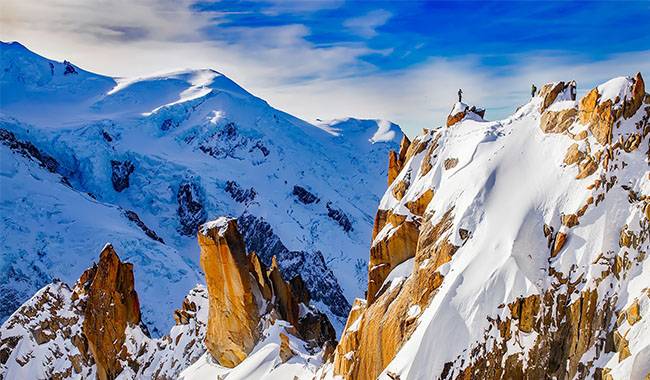
Chamonix is one of the oldest Alpine resorts. Like St. Anton in Austria, it is part of the famous Best of the Alps Club, which brings together the oldest and most famous ski resorts.
The town at the foot of Mont Blanc is lively in summer and winter. Unlike most French resorts, it is not built specifically for skiers, which has its advantages and disadvantages. The ski area is made up of several sections connected by ski buses that take you to the lifts from your hotel or residence. The resort itself is 0.68 miles (1100 meters) above sea level, and of course, there are no ski runs that go directly down to the hotel. In addition to skiing, there is plenty of entertainment – restaurants, cafes and bars, shopping, a new water sports center, and more.
The ski slopes are usually open on the penultimate Saturday in November, but for the first few weeks, the lifts are usually only open on weekends. However, it all depends on the weather. The most popular local route is the climb to Aiguille du Midi, an observation point located at 2.4 miles (3800 meters). The Vallee Blanche, an off-piste descent of about 12.5 miles (20 km), begins from this lookout point with a magnificent panoramic view of Mont Blanc and the French, Swiss and Italian Alps. It is not recommended to pass without a mountain guide, especially if it is your first time here, there are easy routes and very difficult ones. The ability to descend varies greatly depending on the weather, so be prepared in advance to avoid ending up disappointed.
Another high-altitude route is the train to Montenvers – Mer de Glace. from here, you have direct access to the glacier that descends from Mont Blanc into the valley.
From here there is no downhill skiing, only training or hiking back. If you wish, you can spend the night here in a 4-star hotel, which retains the atmosphere of the 19th century when it was built.
Chamonix is only 56 miles (90 km) from Geneva airport and is a quick and easy drive. If you rent a car, you can not only get around all the ski resorts but also drive to the neighboring towns and villages – the thermal baths of Saint-Gervais, Megève, and Geneva. The local ski pass covers a huge ski area, including Verbier in Switzerland, so there is plenty to do
Courmayeur
Courmayeur in Italy is located on the other side of Mont Blanc and has a descent on its White Valley route. The ski area on the prepared slopes here is very small, about 37 miles (60 km), and the ski season opens at the end of November. However, there are several hectares of virgin land, including virgin land in the forest, and it is for this that skiers and snowboarders come here. The resort is not just for active skiers, however; visitors come all year round for the stunning scenery, hiking, snowshoeing, and other winter fun. There is also an observation platform on the slopes of Mont Blanc.
Courmayeur is open year-round and, despite being one of the most famous Alpine resorts, is moderately priced. Those who prefer the “sweet life” will find luxury hotels, expensive restaurants, and nightclubs.
In the neighboring village of Pré-Saint-Didier, there is a spa complex that is well worth a visit. The Romans have visited the local baths and the current building was built in 1834. The baths have recently been renovated and expanded. If you’re lucky, you can watch the moon of Mont Blanc while bathing in the outdoor pool – an unforgettable experience!
From Geneva airport, you can get here by road through the tunnel under Mont Blanc. Another option is from Milan airport, where direct flights from the US to Turin are available all year round. This road runs through the valley without the mountain serpentine and is actually a highway from the airport to the door.
We’ve highlighted just a few of the alpine resorts where those who can’t wait to get on skis or snowboards can kick off the ski season. There’s much more to choose from. Young and rowdy, family-run and quiet, with groomed trails and pristine terrain for every taste and wallet. The choice is yours, but one thing is for sure: fun is guaranteed.